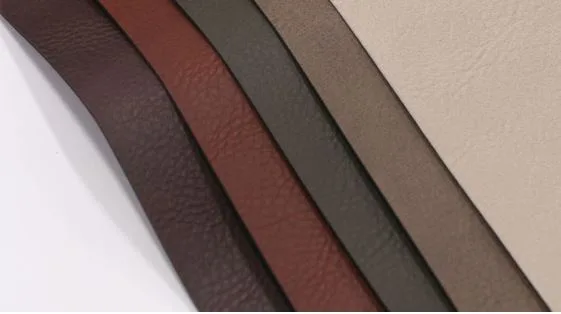Benefits Of PU Leather Fabric You Need To Know
In recent years, PU leather has become a popular choice across a wide range of industries including fashion, furniture, automotive, and accessories. As consumers increasingly look for cost-effective, stylish, and cruelty-free alternatives to real leather, PU leather fabric stands out as a practical and appealing solution. Whether you’re shopping for a new handbag, a stylish jacket, or revamping your living space, understanding the benefits of pu leather fabric will help you make informed and confident choices. Let’s explore the reasons why PU leather has captured the attention of both manufacturers and conscious consumers.
Animal-Friendly Alternative
One of the most important benefits of PU leather is its animal-free origin. Unlike genuine leather, which is made from animal hides, PU leather is a synthetic material produced by coating a fabric base—typically polyester or cotton—with a layer of polyurethane. This means no animals are harmed in its production, making it an ethical and cruelty-free alternative for individuals who support vegan or sustainable lifestyles.
Many brands are now moving toward cruelty-free options, and PU leather offers them the perfect middle ground between luxury and responsibility. Consumers who value animal welfare can enjoy leather-like products without compromising their principles, while still maintaining high style standards.
Affordability Without Compromising on Aesthetics
Another standout feature of PU leather is its affordability. PU leather fabric is considerably more cost-effective than genuine leather, both in terms of production and retail price. This opens the door for more people to enjoy the luxurious appearance of leather products without the premium cost.
Despite its lower price, PU leather is designed to replicate the texture, gloss, and richness of natural leather. With advanced manufacturing techniques, PU leather can be embossed, dyed, or textured in a variety of styles—making it nearly indistinguishable from the real thing to the untrained eye. From chic handbags to designer-look sofas, PU leather offers style without the financial burden.
Easy to Maintain and Clean
PU leather is a favorite for households and consumers seeking low-maintenance materials. Unlike genuine leather, which requires special cleaning agents and conditioning treatments to preserve its look, PU leather fabric is incredibly easy to clean. Most stains and spills can be wiped away with a damp cloth, making it ideal for furniture, car interiors, or fashion accessories that are used daily.
Its water-resistant surface also adds to its practical appeal. PU leather doesn’t absorb liquids like real leather, so there’s less worry about spills or moisture damage. This makes it a top choice for busy families, pet owners, and anyone who values functionality in everyday items.
Wide Range of Styles and Colors
PU leather fabric is highly versatile in design. Because it’s synthetically produced, it can be made in virtually any color, finish, or pattern. From glossy and metallic to matte and distressed textures, PU leather allows designers to push creative boundaries that are difficult to achieve with genuine leather.
This flexibility makes PU leather ideal for seasonal fashion trends and interior design themes. Want a pair of fire-red boots or a turquoise faux-leather armchair? With PU leather, the possibilities are endless. Fashion houses and home décor brands alike love using PU leather because of the vast customization options it provides.
Lightweight and Comfortable
Compared to genuine leather, PU leather is noticeably lighter, which adds to its practicality in everyday use. For example, PU leather jackets and handbags weigh less than their real leather counterparts, making them more comfortable to wear or carry for extended periods.
The lightweight nature of PU leather fabric also benefits the automotive and furniture industries, where reducing the weight of materials can lead to better performance or easier transportation. Moreover, PU leather tends to feel softer and more flexible from the outset, eliminating the “breaking-in” period often associated with real leather.
Environmentally Efficient Manufacturing
Although PU leather is a synthetic product, it generally has a lower environmental impact in its manufacturing process compared to natural leather. Producing real leather involves resource-heavy practices such as livestock farming, tanning with toxic chemicals, and significant water consumption. PU leather bypasses these steps, reducing the ecological footprint.
Moreover, innovations in eco-friendly polyurethane compounds and water-based production methods are making PU leather even greener. Brands concerned with sustainability are now adopting these improved techniques to reduce emissions and minimize waste. As the demand for environmentally responsible products continues to grow, PU leather stands out as a more sustainable alternative to traditional leather.
Resistance to Cracking and UV Damage
Durability is another strong benefit of PU leather. Unlike genuine leather, which can dry out, crack, or fade under sunlight over time, PU leather is more resistant to these effects. It maintains its appearance even when exposed to light, heat, or humidity, making it an excellent choice for outdoor applications or sunny environments.
Modern PU leather fabrics are often engineered to withstand environmental stress, ensuring they retain their beauty and structural integrity over the years. For example, PU leather car seats or patio furniture can look new for a long time with minimal upkeep, offering both function and style in one material.
Hypoallergenic and Skin-Friendly
PU leather is also known to be more hypoallergenic than natural leather. Real leather can sometimes contain residues from tanning chemicals that cause skin irritation in sensitive individuals. PU leather, on the other hand, is manufactured with synthetic polymers that are less likely to provoke allergic reactions.
This quality makes PU leather fabric a safer and more comfortable option for clothing and accessories, especially those worn close to the skin, such as gloves, jackets, or belts. People with allergies or sensitive skin can often use PU leather products without discomfort, which enhances its appeal in the personal fashion market.
Versatility Across Industries
The benefits of PU leather extend far beyond personal fashion. It’s a material embraced by multiple industries for its adaptability, performance, and aesthetic value. In the automotive sector, PU leather is widely used in seating, dashboards, and door panels. In the furniture industry, it adds a touch of elegance to sofas, chairs, and ottomans without the high cost of real leather.
Fashion designers use PU leather to create everything from jackets and boots to wallets and handbags. Tech companies are even using it in the production of stylish protective cases for laptops and smartphones. PU leather’s ability to balance beauty, performance, and affordability makes it one of the most versatile materials in today’s market.
Conclusion
PU leather fabric has revolutionized the way we think about leather alternatives. From its animal-free origins and budget-friendly nature to its durability, ease of maintenance, and design flexibility, PU leather provides an impressive array of benefits. It caters to the growing demand for ethical, stylish, and functional products without compromising on quality or aesthetics. Whether you’re a designer, consumer, or manufacturer, understanding the many advantages of PU leather can guide smarter and more sustainable decisions. As innovation continues to drive improvements in synthetic fabrics, PU leather is sure to remain a go-to material for the future of fashion, interiors, and beyond.






